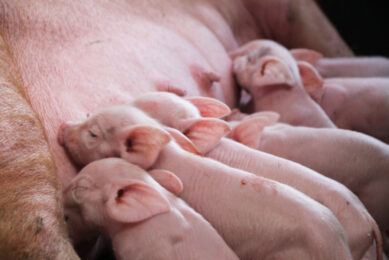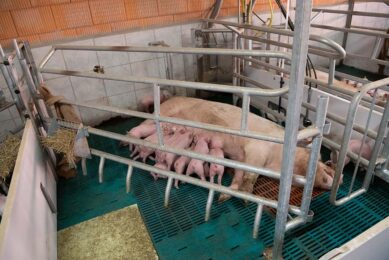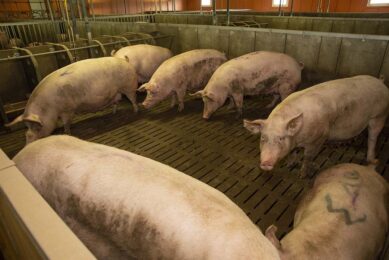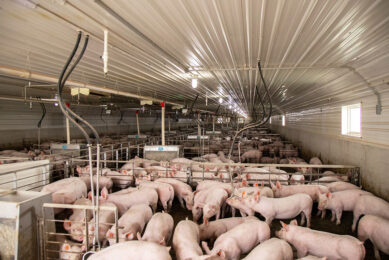JRP: Attention for difficulties at farrowing and self-assessment
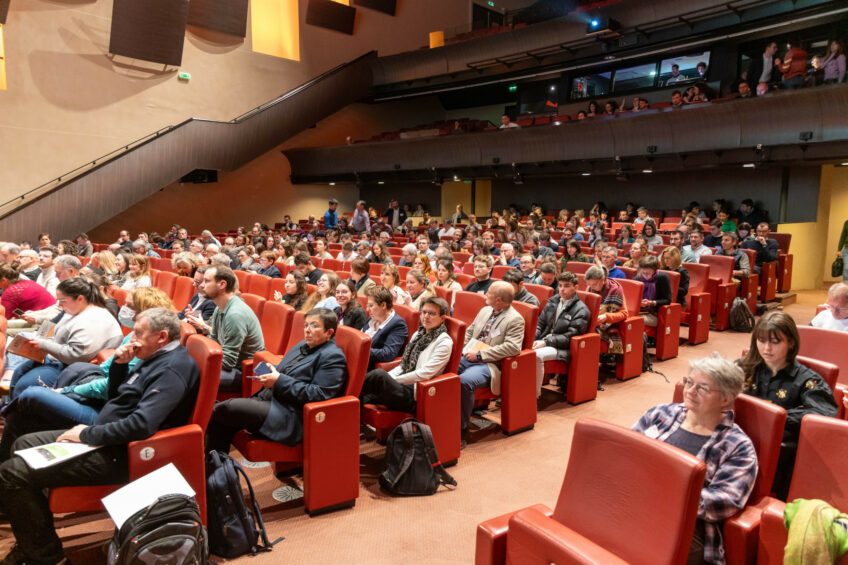
The 57th edition of the annual French Swine Research Days, held early February 2025 in Saint-Malo, was the best-visited edition so far. Amongst the many scientific studies to animal nutrition, there was also attention for topics like difficult farrowings and how to do a self-assessment as a swine farm.
The topic of risk factors during farrowing was introduced by Jean-Charles Besnard, pig nutrition market manager at farming cooperative Terrena. He presented a study of the farrowing duration of sows to evaluate the risk factors for difficult farrowings and understand their variability. On a French farm with 1,000 sows, video analysis of 4 groups of 40 sows was used to determine the farrowing duration. The team assessed the progress of farrowings, piglet vitality at birth and the performance of litters during lactation with 142 sows.
The mean farrowing duration was 323.6 minutes for 19.1 born piglets. The farrowing duration was influenced significantly by the stillbirth rate and tended to be influenced by sow parity and backfat thickness at weaning. Piglet vitality was higher for piglets born from sows of parity 1 and decreased during farrowing. Stillbirth was lower for sows of parity 1 and higher for sows with backfat thickness at weaning more than 17 mm and those which farrowed at night.
The performance of sows with “difficult” farrowings (i.e. longer than 400 minutes) was analysed and compared to that of sows with “regular” farrowings. Sows with “difficult” farrowings had thicker backfat at farrowing (19.0 vs. 17.2 mm) and a higher stillbirth rate (13.6% vs. 5.0%) at a given prolificacy for the 2 groups.
In short: characterising sows with “difficult” farrowings could help identify sows at risk for stillbirths and allow for adjustments in management (culling criteria and/or increased monitoring).
Attractiveness of pig farming
What is the attractiveness of pig farming? Claudie Guyomarc’h is attached to the Chamber of Agriculture of Brittany. She held an interesting presentation about the development of a self-assessment test for farmers regarding the attractiveness of pig farming. In the pig sector, it takes more than four months on average to hire a salaried employee and 20% longer to hire a worker than in other agricultural sectors. In addition, the working conditions of employees are not always optimal.
To address that situation, the Chamber of Agriculture studied on farm working conditions for four years and created a web tool with which pig farmers, managing human resources, can test the attractiveness of their farm. The self-assessment was developed based on three surveys of agricultural students and the technicians who consult pig producers.
The test contains 61 yes/no questions in 6 main categories:
- enhancing the team;
- participative management;
- providing perspectives to the working staff;
- enhancing human health and security;
- organising the work;
- improving working conditions (in and around buildings).
The tool also provides documents to help managers to increase their farm’s attractiveness. This tool, which is available online on the chamber’s website, is also available for dairy farmers and will be available for poultry farmers next year.

Managing heat stress
2 presentations revolved around the topic of heat stress and how to manage that phenomenon. Dr David Renaudeau (INRAE) zoomed in on the consequences of heat stress during gestation on feeding behaviour, growth performance and carcass composition of pigs. He said, “High temperatures during gestation induce thermoregulatory responses which can affect the expression of growth potential in offspring.” His study also showed that prenatal heat stress alters the feeding behaviour of growing pigs reared in groups, with negative consequences on growth performance and slaughter weight.

Dr Nathalie Quiniou (IFIP) held a presentation on energy intake of lactating sows exposed to chronic or occasional heat stress. She pointed out that the “pig is a homeothermic animal with a relatively narrow thermal comfort zone.” Her focus was to evaluate the benefit of changing the distribution times (without changing the feed) or using a less thermogenic feed (without changing the distribution times) in a situation of chronic or occasional heat stress.
The study confirmed that in spite of hot climatic conditions, it is possible to stimulate the lactating sow’s energy consumption by a judicious choice of feeding management. The results demonstrated that a low thermogenic diet can help increase net energy intake when sows are exposed to heat waves and chronic heat stress, while changing the meal distribution increases feed intake only during heat waves.
More growth and heavier carcasses
In another presentation by Dr Nathalie Quiniou, the focus was on finishing performance and carcass characteristics of entire male pigs fed ad lib. The animals in the trial were crossbred Piétrain x Large White x Landrace. They received grow-finishing diets formulated either to 9.4 or 9.9 MJ/kg of net energy. The results demonstrated that increasing the dietary net energy content from 9.4 to 9.9 MJ/kg, and amino acids accordingly, could help increase energy intake by entire male pigs.
That way, it might be an interesting solution to stimulate the growth rate when the pork-price context encourages heavier carcasses. She concluded, saying, “However, care should also be taken to increase the amino acid intakes to maintain the balance between nitrogen and energy inputs, and that the net energy content does not exceed the recommended 10.0 MJ/kg to limit the risk of boar taint.”

The US pork industry at a crossroads
IFIP’s market analyst Elisa Husson spoke about the United States pork market, which has grown strongly between 2014 and 2020. However, recent years have brought significant challenges that mark a critical juncture for the industry. Factors such as the Covid-19 pandemic, outbreaks of Porcine Reproductive and Respiratory Syndrome (PRRS), trade disputes and inflationary pressures have combined to decrease hog numbers and production. Those challenges have led to significant financial losses in the livestock sector and have changed supply dynamics.
At the same time, the industry is facing increasing constraints, particularly in the newly regulated slaughter and processing sectors, which are facing chronic labour shortages. Husson concluded that the need to balance pork production and slaughter capacity to mitigate market volatility emerges as a critical imperative. In addition, political decisions and labour availability in the processing sector are imposing additional economic burdens.
As a result, the competitiveness of the US market may decrease, and the industry will have to find alternative strategies to maintain production capacity in the coming years.



